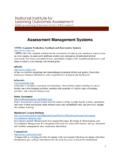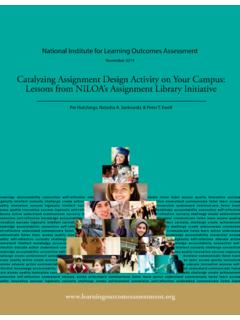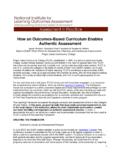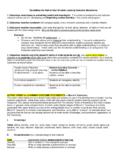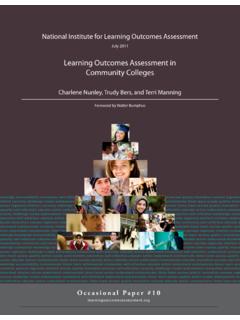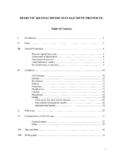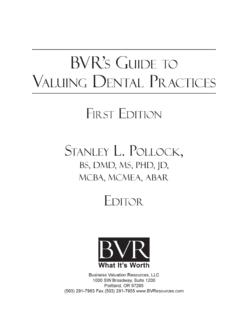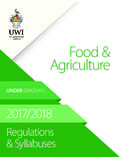Transcription of Mapping Learning: A Toolkit of Resources
1 1 Mapping Learning: A Toolkit of Resources 2 Mapping Learning: A Toolkit of Resources Institutions of higher education are complex spaces, with students learning in all corners of them, building upon the prior learning they bring with them. The complexity of our educational environments poses a challenge to understanding where students learn and how learning is reinforced and integrated across curricular, co-curricular, and work-based experiences. In its most recent survey of activity within the field, the National Institute for Learning Outcomes assessment (NILOA) has seen an increased awareness of the range of places that learning happens within institutions as well as the need to document and align learning throughout. While 77% report that their institutions are currently involved in curriculum Mapping of some kind, only 50% indicate that all programs have learning outcomes and that those outcomes align throughout the institution (Jankowski, Timmer, Kinzie, & Kuh, 2018).
2 Faculty are working to create a curriculum that intentionally builds in integrated learning opportunities over time for students to apply and practice as well as transfer their knowledge and skills through assignments, in and out of courses. Mapping has emerged as a key strategy for examining the alignment of the different elements of learning environments towards shared learning outcomes as well as to better understand where to assess and document learning. In addition, as assignments continue to take on prominence as a useful source of learning related to larger shared learning outcomes (Jankowski, Timmer, Kinzie, & Kuh, 2018), the need to map relationships between institution, co-curricular, general education, and program learning outcomes with courses and specific assignments takes on increasing importance. In this Toolkit , we present a variety of information on the Mapping process what are the purposes and uses of maps, what can be mapped, and various approaches to engage with Mapping learning.
3 We assume the focus of Mapping is on documenting learning, but the approaches addressed here would be applicable with a different focus or lens as well. We invite you to share with us additional examples, materials, Resources , and modifications of the Toolkit to add to this resource. If you have examples, please send them to 3 What is Mapping ? Mapping is a tool for seeing relationships between different aspects of the institution based on learning outcomes. The most common form, curriculum Mapping at a program-level, makes visible how courses in a curriculum align to the learning outcomes to which that curriculum strives. In its simplest version, the curriculum map is built on a two-dimension matrix, with the outcomes arrayed across the top (the x-axis) and courses listed down the left side (the y-axis). As depicted in figure 1, a mark is made in the box where a course addresses an outcome.
4 Outcome 1 Outcome 2 Outcome 3 Course 1 X X Course 2 X Course 3 X X Figure 1: A basic curriculum map Such maps are a common hallmark of assessment systems and provide a means to examine if there are gaps in a program s curriculum in relation to any learning outcomes. The process most commonly entails three different approaches led entirely by faculty. excel spreadsheet is electronically sent around to faculty and individual facultymembers complete the sheet based on the courses they teach. Responses are thencompiled and program or department chair, in isolation, completes the map and submits it to anassessment management come together to identify which courses align with which outcomes or wherevarious learning outcomes are limitation here, is that Mapping under the first two approaches generates reports which can be pulled for review, but the maps are rarely used.
5 Further, if two faculty members mapped the curriculum individually, there is no guarantee they would develop the same map. If students mapped where they thought the learning outcomes were addressed, there would be another map as well. How much does a learning outcome need to be covered to be counted on the map? Is it necessary for it to be assessed to appear? Do we even have a shared understanding of what the learning outcomes are to indicate the relationship between them and courses? Further, this approach focuses upon academic affairs at the expense of learning in other places. The same map could be utilized with co-curricular learning experiences by changing the title of course to learning experience (Figure 2). 4 Co-curricular Learning Outcome 1 Outcome 2 Outcome 3 Learning Experiences 1 X X Learning Experiences 2 X Learning Experiences 3 X X Figure 2: Co-curricular learning map An approach focused on Mapping that builds towards shared understanding of integrated design is one that brings groups together to discuss collectively where learning occurs, making explicit relationships that may not be wholly visible.
6 It surfaces assumptions that may be directing energies in unproductive directions. Just as importantly, when completed as a collective enterprise, Mapping becomes a means of generating consensus and collaborative ways to move forward (Jankowski & Marshall, 2017). This Toolkit offers means of developing a more collective approach to Mapping as well as to exploring the various elements of the learning environment that can be mapped beyond program-level learning. Why Curriculum Mapping ? Curriculum Mapping is inherently about alignment in educational environments around learning, and as Jankowski (2017) observes, alignment is a mechanism by which to counteract incoherence and fragmentation of the college experience. Mapping , therefore, is a strategy for visualizing the areas of where we think learning is happening that relates to specific learning outcomes.
7 Teaching is an inherently collaborative activity, with faculty sharing students across classes, but conversations about how to leverage the collaborative nature of teaching rarely occur. Mapping opens up discussions about what outcomes mean, how they manifest in the curriculum, and how different courses foster shared learning outcomes. Before beginning any Mapping experience, we need to be clear on what we are trying to map and why, who should be involved in the process, if we are Mapping for purposes of reporting or improvement, and whether we are utilizing multiple lens to capture learning in a wider net. For Mapping is undertaken to serve a variety of purposes including: Provide an overview of the structure of the curriculum and the contribution of individualcourses to the goals of the program; Explore alignment within a program, between general education and institutional goals,etc.
8 ; Identify where and how particular outcomes are expected, explicitly taught for, andassessed; Backward design the curriculum; Understand the nature and role of course pre-requisites;5 Identify program strengths - student learning outcomes that are thoroughly addressed Help departments identify gaps - learning outcomes that are addressed by only a fewcourses; Suggest whether students take courses in an optimal sequence; and/orNote: A n important part of any Mapping exercise is to overlay course taking patterns ofstudents. If the students are not moving through the way the curriculum is intended, wewould not expect to see the progression in their learning. Advising tools that provide students with an overview of the role of each course in thecurriculum and why some courses should be taken in a particular also occurs at a variety of levels including: Within courses; Program; Between general education and the major; Co-curricular; Institution to mandates or standard bodies; and/or Learning Frameworks (such as Essential Learning Outcomes, Degree Qualifications Profile, Beta Credential Framework) These multiple possible conversations highlight the degree to which Mapping functions as a lens.
9 One would not use a microscope to look at the stars any more than one would look through a telescope to see an amoeba. Lenses enable viewers to see some things by screening out others. They focus attention on particular aspects. Learning, after all, does not happen in classrooms and labs alone. Students encounter co-curricular activities that build and reinforce learning, while others bring work experience or campus employment experiences to bear on their learning. Course taking patterns might be mapped to discern how students are moving through the curriculum, a valuable insight since, as Paul Gaston (2015) points out, they often move in and out or shift direction en route to degrees. Maps might also be used to identify relationships between what students learn and the competencies expected by potential employers including campus employers of students.
10 What lens is applied depends entirely on what question is being asked. Beginning to map, therefore, requires an intentional stance. Five questions can help to promote an intentional Mapping effort (Jankowski & Marshall, 2017): : What are we Mapping and why? What pieces of the educational environmentneed to be aligned? : What parts of the learning environment are included or left out by thisapproach? : Who should be involved in the conversations?6 : How many layers do our maps need to address educational complexity? : What ways of seeing are we excluding in our maps? Mapping across a learning environment is productive, because, when done collectively and collaboratively, it begins to bridge the administrative divisions that separate an institution. Oftentimes, knowing how to collaborate between student affairs and academic affairs, for example, can pose a challenge.
